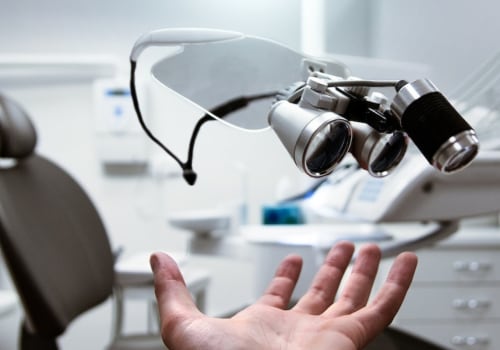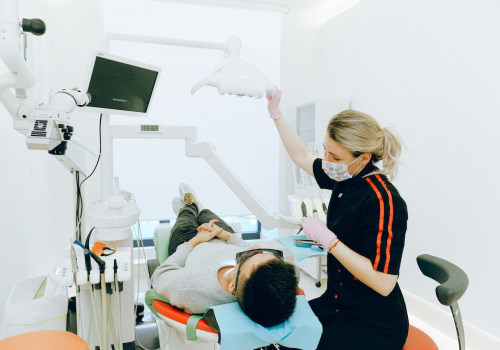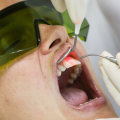The use of lasers in dentistry has gained popularity over the past few decades, offering a range of benefits that traditional dental tools cannot provide. Lasers, which stand for Light Amplification by Stimulated Emission of Radiation, are used in various dental procedures, including gum reshaping, cavity removal, teeth whitening, and lesion removal. The question of their safety, however, is paramount for both patients and dental practitioners.
Precision and Reduced Discomfort
One of the primary advantages of using lasers in dentistry is their precision. Lasers allow dentists to target specific areas without affecting the surrounding tissues, making procedures less invasive. This precision reduces the risk of complications and leads to faster healing times. For example, when performing a gum reshaping procedure, a laser can accurately remove excess gum tissue without damaging adjacent structures. This level of accuracy is difficult to achieve with traditional dental tools.
Minimizing Pain and Discomfort
Laser dentistry is known for minimizing pain and discomfort during and after procedures. The heat generated by lasers can coagulate blood vessels, which reduces bleeding and swelling. This results in less postoperative discomfort and a quicker recovery period for patients. Many patients report that they need less anesthesia and experience less anxiety when undergoing laser treatments. This is particularly beneficial for individuals who have a low pain threshold or dental anxiety.
Sterilization and Infection Control
Lasers have inherent sterilization properties, which help reduce the risk of bacterial infections. The high-energy beam of a laser can effectively sterilize the area being treated, minimizing the chances of post-procedural infections. This is especially important in periodontal treatments, where infection control is critical to the success of the procedure. The use of lasers can, therefore, enhance the overall safety and efficacy of dental treatments.
Reduced Need for Stitches
In many soft tissue procedures, the use of lasers can eliminate the need for stitches. Lasers can seal blood vessels and nerve endings, which promotes faster healing and reduces the need for sutures. This not only makes the procedure less invasive but also enhances patient comfort and speeds up the recovery process. For example, when treating a frenectomy or removing a tongue-tie, lasers can provide a clean and precise cut that heals quickly, reducing the need for additional interventions.
Less Invasive and Quicker Procedures
Laser treatments are generally less invasive than traditional methods, leading to shorter procedure times. This is advantageous for both patients and dental practitioners, as it reduces chair time and increases efficiency. Procedures such as cavity preparation and gum disease treatment can be completed more swiftly, allowing for more patients to be treated within the same timeframe.
Safety Concerns and Regulations
Despite the numerous benefits, the safety of lasers in dentistry depends on proper usage and adherence to safety protocols. Dental practitioners must undergo specific training to use lasers effectively and safely. Improper use of lasers can lead to complications such as tissue damage, burns, or unintended injury to surrounding structures. Ensuring that the dental professional is adequately trained and certified in laser dentistry is crucial for patient safety.
Regulatory bodies such as the American Dental Association (ADA) and the Food and Drug Administration (FDA) have established guidelines and standards for the use of lasers in dental practice. These regulations are designed to ensure that lasers are used safely and effectively, minimizing potential risks. Patients should seek dental practitioners who adhere to these guidelines and have a proven track record of safe laser usage.
Combining Lasers with Traditional Treatments
In many cases, lasers are used in conjunction with traditional dental treatments to enhance outcomes. For example, a dentist might use a laser to remove decayed tissue before placing a filling or use it to enhance the effectiveness of a whitening treatment. This integrative approach combines the benefits of lasers with the reliability of traditional methods, providing optimal results for patients.
Seeking the Best Orthodontist
When considering laser treatments, it’s essential to find a qualified and experienced dental professional. Searching for the "best orthodontist near me" can help you locate practitioners who are skilled in using lasers for various orthodontic procedures. These professionals can offer comprehensive care, ensuring that you receive the safest and most effective treatments available.
Conclusion
Lasers in dentistry offer numerous advantages, including precision, reduced discomfort, enhanced sterilization, and quicker recovery times. When used correctly by trained professionals, lasers are a safe and effective tool for a wide range of dental procedures. However, it is crucial to ensure that the dental practitioner is certified and adheres to established safety protocols. By combining lasers with traditional treatments and seeking care from reputable professionals, patients can experience the benefits of advanced dental technology while minimizing risks. The growing adoption of laser technology in dentistry continues to improve patient outcomes, making it a valuable addition to modern dental practice.







